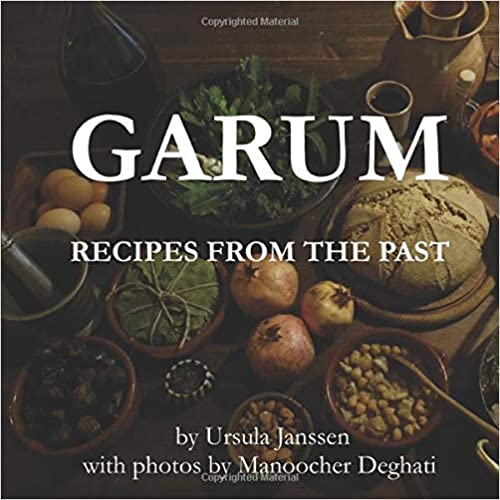
Garum: Recipes From the Past
Tom Verde
Ursula Janssen
2020, Independently Published, 979-8-63491-120-5, $32 pb.
Historical recipes, as author Ursala Janssen points out, can be difficult to interpret because they are often little more than “a list of (proposed) ingredients.” Informative and wide-ranging— borrowing from Mesopotamia to Elizabethan Europe—her book aims to offer recipes “you can actually easily do at home, in a normal household kitchen, with readily available ingredients.” Janssen does suggest substitutes for ingredients like vinegar for verjuice (the juice of unripened grapes, popular in medieval/Renaissance cuisine) or Thai fish sauce for the garum of the title, a heady concoction of fermented fish guts, a favored condiment in the Greco-Roman world. But where is one to find “2 pigeons, preferably with heart, liver, and gizzards” at the average grocery store when preparing the questionably appetizing Babylonian pigeon burger? Honey-sweetened, Roman-era cheesecake in a terracotta bowl sounds tempting. But its two cups of “white cheese” (feta? cottage?) is somewhat vague. A better volume for the armchair gourmet or food-history enthusiast than the home cook.
You may also be interested in...

Nomadic Chieftain’s Biography Unveils Dynamics of Colonial Expansion
Historian Tetsu Akiyama challenges the narrative that the Kyrgyz were a “static and monotonous ‘traditional’ society’” destined to be subsumed.
Ancient Egyptians Still Have Things to Teach Us
Socrates and other Greek thinkers admired Egypt for its philosophical tradition. This new translation of a manuscript as old as the pyramids shows us why.
The Ebb and Flow of History on the Zambezi River
In tracing the past six centuries of history, historian Malyn Hewitt captures the cyclical rise and fall of the river and its people.